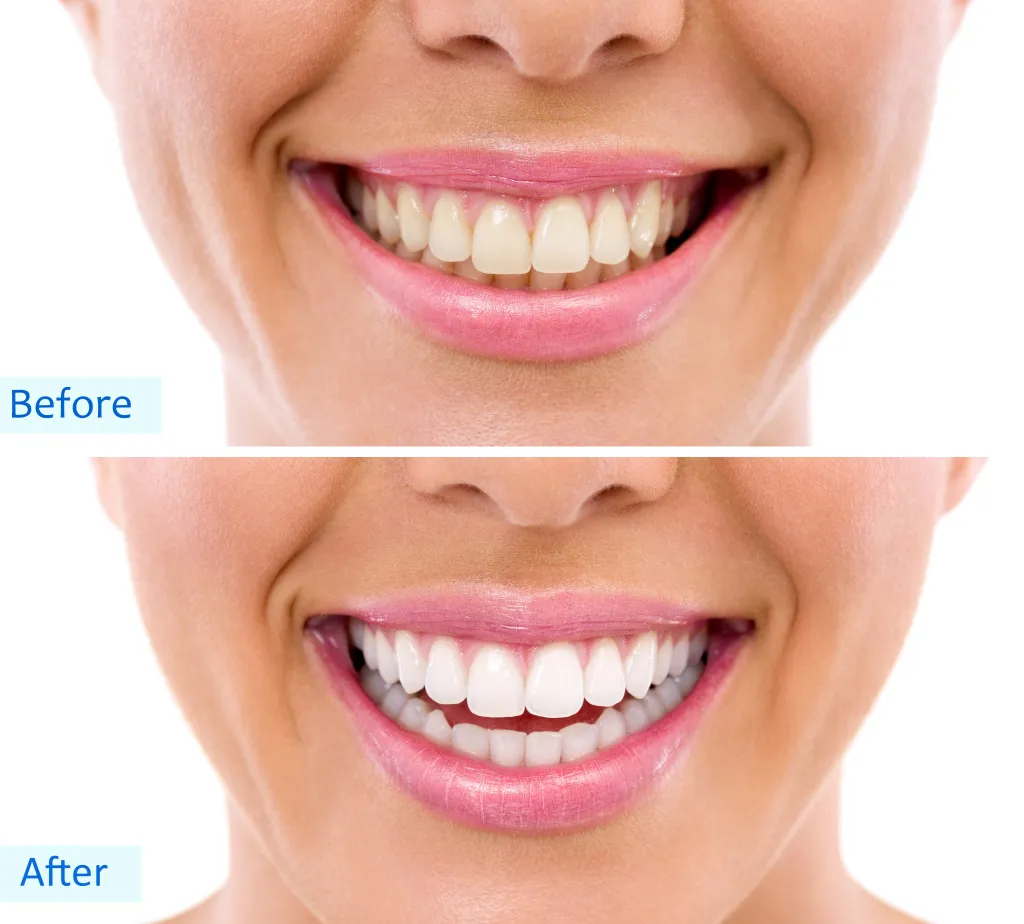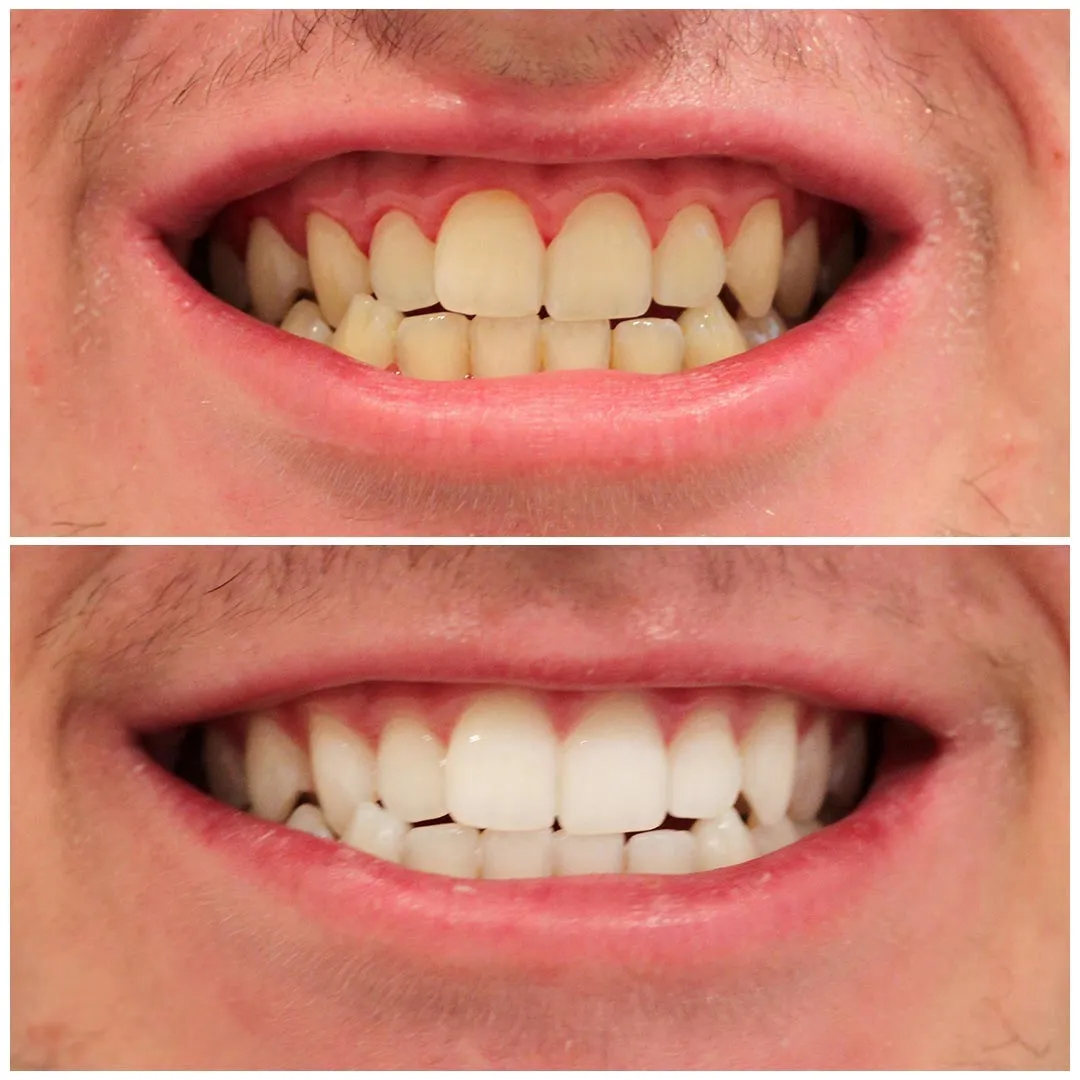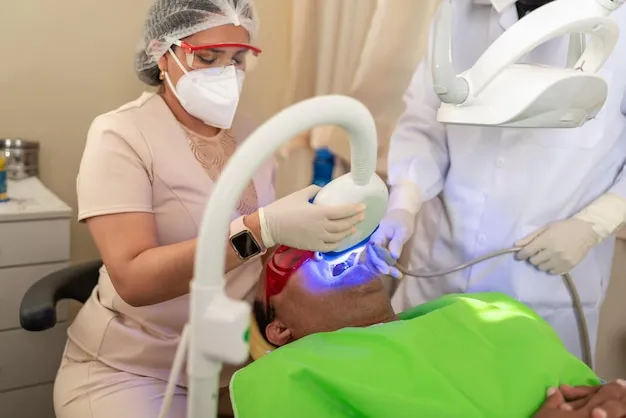What is Tooth Whitening Procedure?
Tooth whitening, also known as teeth whitening, is a cosmetic dental procedure designed to lighten the shade of your teeth. It aims to remove stains and discoloration, giving you a brighter, more confident smile. Discoloration can occur for a variety of reasons, including aging, genetics, certain foods and drinks (like coffee, tea, and red wine), and smoking. Tooth whitening procedures offer a solution to combat these effects and restore the natural brilliance of your teeth. The process involves the use of bleaching agents that penetrate the enamel to break down stain molecules. This can be achieved through professional treatments at a dentist’s office or through at-home methods prescribed and supervised by a dental professional. It’s a popular and effective way to enhance your smile and boost your self-esteem.
Understanding the Different Types of Whitening Procedures
There are primarily two main categories of tooth whitening procedures in-office whitening and at-home whitening. Both methods utilize bleaching agents, but the concentration and application vary significantly. In-office whitening, performed by a dentist, uses a higher concentration of bleaching agents and often incorporates special lights or lasers to accelerate the whitening process. At-home whitening involves the use of custom-fitted trays or strips containing a lower concentration of bleaching agents, allowing you to whiten your teeth in the comfort of your own home. Choosing between these options depends on factors like the severity of discoloration, your desired results, and your dentist’s recommendations. Consulting your dentist is crucial to determine the most suitable and effective approach for your individual needs, ensuring both optimal results and the safety of your oral health. Understanding these differences will help you make an informed decision when considering a tooth whitening procedure.
In-Office Whitening Procedure

In-office tooth whitening, also known as professional teeth whitening, is a cosmetic procedure performed by a dentist in their clinic. This method offers the most immediate and dramatic results, as it utilizes a higher concentration of bleaching agents than at-home methods. The entire process is closely monitored by a dental professional, ensuring safety and minimizing the risk of side effects. The procedure typically involves isolating the teeth with a protective barrier to shield the gums and soft tissues from the bleaching agent. The dentist then applies the whitening solution to the teeth and may use a special light or laser to activate and accelerate the whitening process. This can significantly reduce the time it takes to achieve a noticeably brighter smile. In-office whitening is an excellent option for those seeking rapid results or dealing with stubborn stains. The entire appointment usually lasts about an hour, making it a convenient choice for busy individuals.
The Process of In-Office Whitening
The in-office whitening process is carefully orchestrated to ensure optimal results and patient comfort. Before the procedure begins, the dentist will conduct a thorough examination of your teeth and gums to ensure they are healthy and suitable for whitening. A protective barrier, often in the form of a rubber dam or a liquid dam, is applied to the gums to protect them from the bleaching agent. The dentist then applies the whitening solution, typically containing a high concentration of hydrogen peroxide or carbamide peroxide, to the surface of the teeth. A special light or laser may be used to activate and accelerate the bleaching process. The whitening solution is usually applied in multiple sessions, each lasting about 15-20 minutes, followed by a brief rinse. After the final application, the dentist will remove the protective barrier and provide you with instructions for post-whitening care, which may include avoiding certain foods and drinks that can stain the teeth. The dentist will also check the results and discuss any sensitivity you may be experiencing, ensuring a comfortable and effective experience.
Benefits of In-Office Whitening
In-office whitening offers several advantages compared to at-home methods. The primary benefit is the speed and effectiveness of the results. Because a higher concentration of bleaching agent is used, in-office whitening can achieve a significantly brighter smile in a single visit. The process is closely monitored by a dental professional, minimizing the risk of complications and ensuring the safety of your teeth and gums. In-office whitening is also a great option for those with significant staining or discoloration that might not respond well to at-home treatments. Another advantage is the convenience; the entire procedure typically takes about an hour. Furthermore, in-office whitening often includes a post-whitening care plan and professional guidance to maintain the results. The immediate and dramatic transformation makes in-office whitening a popular choice for those seeking a quick and effective way to enhance their smile, such as before a special event or important occasion. Additionally, your dentist can address any sensitivity issues and tailor the treatment to your specific needs.
At-Home Whitening Procedures

At-home tooth whitening offers a convenient and cost-effective way to brighten your smile from the comfort of your own home. This method typically involves using custom-fitted trays or pre-fabricated strips containing a lower concentration of bleaching agents. The process generally requires consistent application over several days or weeks to achieve the desired results. At-home whitening kits are available over-the-counter or can be prescribed and supervised by a dentist. Over-the-counter options are generally less potent, providing more gradual results and often include whitening strips or trays that are not custom-fitted. When using at-home methods, it’s crucial to follow the instructions carefully and consult with your dentist to ensure the safety and effectiveness of the treatment. At-home whitening is a good option for individuals who prefer a more gradual approach or those who want to maintain the results of in-office whitening. Proper usage and dental consultation are key to achieving a brighter smile safely and effectively.
Types of At-Home Whitening Products
A variety of at-home tooth whitening products are available, each with its unique features and application methods. Whitening strips are a popular choice, consisting of thin, flexible strips coated with a bleaching agent. They are easy to use and applied directly to the teeth for a specific duration, typically twice a day for several weeks. Custom-fitted trays, prescribed by your dentist, offer a more personalized approach. The dentist takes impressions of your teeth and creates custom trays to fit your mouth perfectly. You fill these trays with a bleaching gel and wear them for a prescribed time, usually overnight or for a few hours each day. Whitening toothpastes and mouthwashes also provide a more subtle whitening effect. They contain mild abrasives or bleaching agents that help to remove surface stains. While these products can contribute to a brighter smile, their whitening power is generally less than that of strips or tray-based systems. Understanding the different types of at-home products and their respective benefits will help you choose the right option based on your preferences and dental needs.
Steps for Using At-Home Whitening Kits
Using at-home whitening kits requires careful adherence to the manufacturer’s instructions or your dentist’s recommendations to ensure both effectiveness and safety. If you are using whitening strips, start by brushing and flossing your teeth to remove any plaque or food particles. Peel the strips from their backing and apply them to your teeth, ensuring they adhere properly to the front surfaces. Follow the instructions for the amount of time the strips should be worn, usually 30 minutes to an hour. With custom-fitted trays, brush your teeth thoroughly and fill the trays with the prescribed amount of whitening gel. Carefully insert the trays into your mouth, making sure the gel covers the teeth. Remove any excess gel and wear the trays for the recommended duration, often overnight or a few hours each day. After each treatment, remove the trays or strips, rinse your mouth, and brush your teeth gently to remove any remaining gel. It’s important to avoid eating or drinking anything other than water during treatment and to consult your dentist if you experience any unusual side effects.
The Advantages of At-Home Whitening

At-home tooth whitening offers several advantages, making it a popular choice for many individuals. One primary benefit is the convenience of whitening your teeth in the comfort of your own home, fitting it easily into your daily routine. The cost-effectiveness is another significant advantage, as at-home kits are generally less expensive than in-office procedures. At-home whitening can also provide a more gradual approach, which can be beneficial for individuals who may experience sensitivity. With custom-fitted trays, the whitening agent is applied more uniformly across the teeth, potentially leading to better results. Also, at-home whitening is often used to maintain the results of in-office treatments, keeping your smile bright over the long term. While it may take longer to see results compared to in-office procedures, the convenience, affordability, and ability to control the process make at-home whitening a compelling option for many looking to enhance their smile.
Choosing the Right Tooth Whitening Procedure
Selecting the right tooth whitening procedure depends on several factors, including your individual needs, expectations, and dental health. Consider the severity of your tooth discoloration; for significant staining, in-office whitening may be the more effective option due to its higher concentration of bleaching agents. Assess your budget and time constraints; in-office whitening provides immediate results, while at-home options are more budget-friendly and offer greater flexibility. Consider your sensitivity to tooth whitening; some individuals may experience increased sensitivity, which should be discussed with your dentist. Your dentist can also guide you through the most appropriate option. It’s important to discuss your goals and concerns with your dentist, who can evaluate your oral health, assess the type and cause of discoloration, and recommend the most suitable procedure for your specific situation. This collaborative approach ensures you achieve the best possible results safely and effectively, leading to a brighter, more confident smile.
Factors to Consider When Choosing a Procedure
When choosing a tooth whitening procedure, several factors should be carefully considered. The primary factor is the type and severity of your tooth discoloration. Surface stains caused by food and drinks may be easily addressed with at-home whitening, while deeper stains caused by medications or trauma may require professional in-office treatments. Your desired outcome and expectations also play a crucial role; if you seek immediate and dramatic results, in-office whitening is the best choice. Your budget and time availability are also essential factors, as in-office procedures are generally more expensive and time-consuming. Your sensitivity to tooth whitening is another important consideration; some individuals may experience increased sensitivity during the process, so discuss this possibility with your dentist. Also, your dentist can evaluate your oral health and advise on any necessary treatments before whitening. They will then explain the pros and cons of each method, ensuring you make an informed decision based on your unique circumstances and oral health needs.
Consulting with Your Dentist

Consulting with your dentist is a crucial step before undergoing any tooth whitening procedure. Your dentist can assess your oral health, identify the cause of your tooth discoloration, and determine the most appropriate treatment plan. They will examine your teeth and gums to ensure they are healthy and suitable for whitening. If you have any existing dental work, such as fillings, crowns, or veneers, your dentist will explain how these may be affected by the whitening process. During the consultation, the dentist will also discuss your expectations and goals, providing realistic insights into the potential outcomes. They can address any concerns you may have about sensitivity or side effects. Your dentist will also inform you about the different whitening options available, their advantages and disadvantages, and associated costs. This comprehensive approach ensures that you receive a personalized treatment plan tailored to your unique needs, maximizing the effectiveness of the procedure and maintaining the health of your teeth and gums.
What to Expect During a Consultation
During a tooth whitening consultation, your dentist will perform a comprehensive examination of your oral health to assess your candidacy for the procedure. This examination typically involves a visual inspection of your teeth and gums, as well as a review of your medical history. The dentist will evaluate the type and severity of your tooth discoloration, determining whether it is caused by surface stains, intrinsic factors, or a combination of both. They may take photographs of your teeth to document the initial shade and track the progress of the whitening process. The dentist will discuss your goals and expectations, providing realistic insights into the potential outcomes and clarifying any questions you may have. They’ll explain the different whitening options available, including in-office and at-home methods, highlighting their advantages and disadvantages. You will also discuss potential side effects, such as tooth sensitivity, and how to manage them. The dentist will then provide personalized recommendations based on your specific needs and oral health, helping you make an informed decision about the best approach for achieving a brighter, more confident smile.
The Role of a Dentist in Tooth Whitening
The role of a dentist in the tooth whitening process is multifaceted, encompassing assessment, treatment, and guidance. They play a critical role in evaluating your oral health, ensuring you are a suitable candidate for whitening. The dentist examines your teeth and gums for any signs of dental problems, such as cavities or gum disease, that need to be addressed before starting the procedure. They also determine the type and cause of your tooth discoloration to recommend the most effective whitening method. Dentists are the only professionals qualified to perform in-office whitening procedures, offering more immediate and controlled results. They monitor the progress of the treatment, addressing any sensitivity or side effects. Even when using at-home methods, your dentist provides essential guidance, prescribing custom-fitted trays and instructing you on proper usage. They also offer post-whitening care instructions, including recommendations for maintaining your results and managing any sensitivity. Your dentist ensures the safety and effectiveness of the whitening process, helping you achieve a brighter smile while protecting your overall oral health.
Post-Whitening Care and Maintenance

After undergoing a tooth whitening procedure, proper post-whitening care and maintenance are crucial for preserving your results and maintaining a bright, healthy smile. Your dentist will provide specific instructions for aftercare, which may vary depending on the type of whitening procedure you underwent. One of the most important aspects of post-whitening care is avoiding foods and drinks that can stain your teeth, such as coffee, tea, red wine, and dark-colored sauces. It’s also recommended to avoid smoking, as it can significantly diminish the effects of whitening. Regular dental hygiene practices, including brushing your teeth twice a day, flossing daily, and using a fluoride-containing toothpaste, are essential for maintaining your bright smile. Consider using a whitening toothpaste or mouthwash as part of your daily routine. Regular dental check-ups and professional cleanings every six months also help to remove surface stains and keep your teeth looking their best. By following these guidelines, you can significantly extend the lifespan of your whitening results and enjoy a confident, radiant smile for years to come.
Tips for Maintaining Your Bright Smile
Maintaining your bright, white smile requires a consistent and proactive approach. Limiting the consumption of staining foods and drinks is essential; this includes coffee, tea, red wine, berries, and dark-colored sauces. If you do consume these items, rinse your mouth with water immediately afterward or brush your teeth shortly after. Avoid tobacco products, including smoking, as they can yellow the teeth and significantly reduce the effectiveness of whitening treatments. Practice good oral hygiene by brushing your teeth thoroughly twice a day with a fluoride-containing toothpaste and flossing daily. Consider using a whitening toothpaste or mouthwash, which can help to remove surface stains. Schedule regular dental check-ups and professional cleanings every six months; your dentist can remove any accumulated stains and help maintain your bright smile. Additionally, consider touch-up treatments with at-home whitening kits or in-office procedures as needed to maintain your desired shade. These measures, combined with good dental hygiene, will help you enjoy a confident, radiant smile for a long time.
Potential Side Effects and How to Manage Them
Tooth whitening procedures can sometimes cause side effects, with the most common being tooth sensitivity and gum irritation. Tooth sensitivity often occurs because the bleaching agents can penetrate the enamel and irritate the nerves in the teeth. This sensitivity is usually temporary and can be managed with various strategies. Using a toothpaste designed for sensitive teeth, containing ingredients like potassium nitrate, can help to desensitize the teeth. Avoiding extremely hot or cold foods and drinks for a few days after the procedure can also reduce sensitivity. Gum irritation, another potential side effect, can result from the bleaching agent coming into contact with the gums. This can usually be avoided by using protective barriers during in-office whitening and carefully following the instructions when using at-home kits. In some cases, the dentist may recommend the use of a fluoride gel or mouthwash to help soothe any irritation. If you experience any severe or persistent side effects, it’s important to contact your dentist for guidance and to ensure the best outcome for your oral health.
